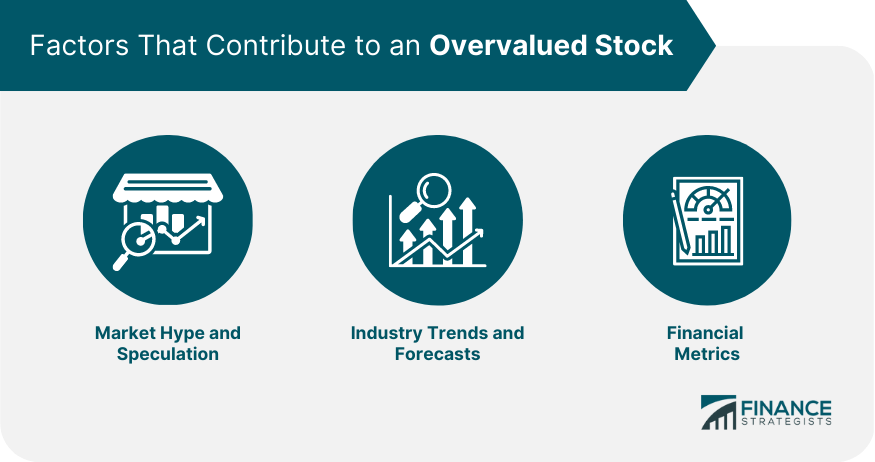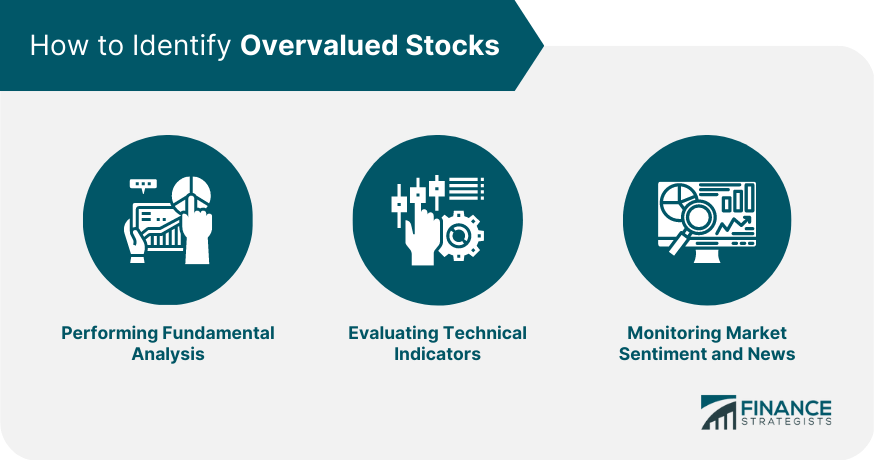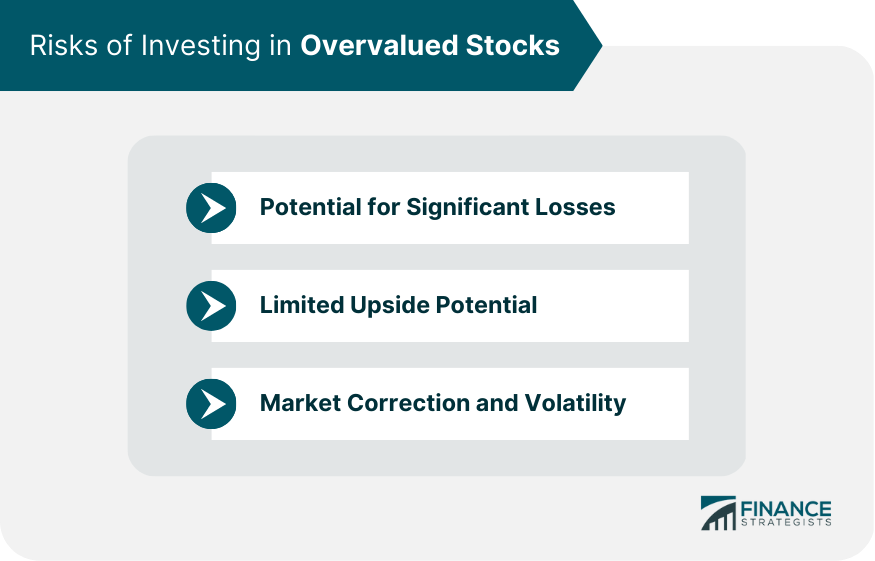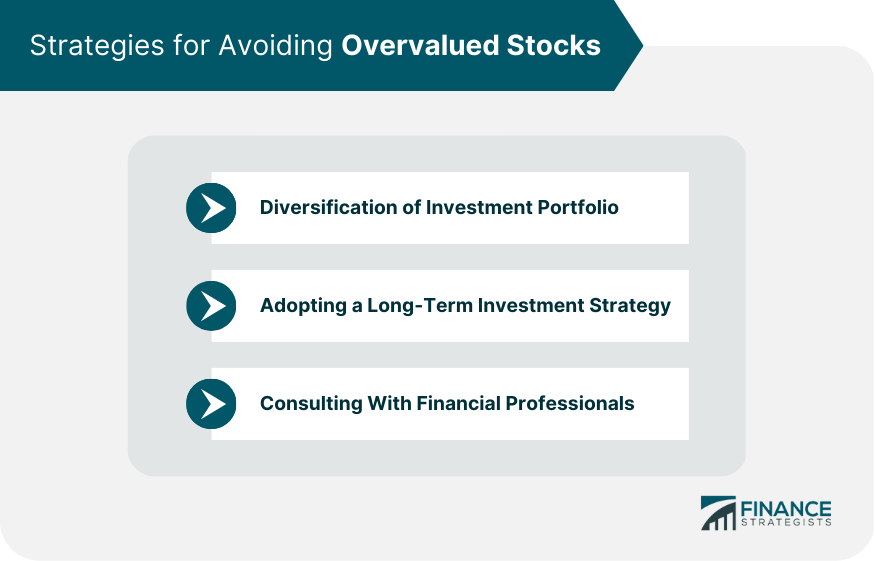An overvalued stock is a security whose current market price is considered to be higher than its intrinsic value. In other words, an overvalued stock is one whose market value is not supported by its underlying financial metrics, industry trends, or market fundamentals. Identifying overvalued stocks is essential for investors and traders because it can help them avoid significant losses and make informed decisions about their investment portfolios. Several factors can contribute to an overvalued stock. These include market hype and speculation, industry trends and forecasts, and financial metrics such as the P/E ratio, P/B ratio, and others. Market hype and speculation are the most common factors contributing to an overvalued stock. Investors often become excited about a company's prospects or a particular industry, leading to an inflated stock price not supported by the company's underlying financials or market fundamentals. This excitement is usually driven by news, social media, or market sentiment, which can create a bubble that eventually bursts, causing significant losses for investors. Industry trends and forecasts can also contribute to an overvalued stock. When investors are optimistic about an industry's future, they tend to buy stocks in that industry, driving up the stock prices of companies in that industry. Industry trends, market reports, or analyst forecasts usually drive this optimism. However, when these trends or projections are inaccurate, the stock prices can plummet, causing significant losses for investors. Financial metrics such as the P/E ratio and P/B ratio can also contribute to an overvalued stock. Investors use these metrics to evaluate a company's financial health and market value. When a company's P/E ratio or P/B ratio is higher than its industry peers or historic averages, it can indicate that the stock is overvalued. However, to avoid false positives, these metrics should be used with other factors, such as the company's growth prospects and industry trends. Identifying overvalued stocks is crucial for investors and traders because it can help them avoid significant losses and make informed decisions about their investment portfolios. Several methods can be used to identify overvalued stocks, including conducting fundamental analysis, evaluating technical indicators, and monitoring market sentiment and news. Fundamental analysis is a method investors use to evaluate a company's financial health and intrinsic value. It involves analyzing a company's financial statements, such as its income statement, balance sheet, and cash flow statement, to determine its profitability, liquidity, and financial stability. Fundamental analysis can also involve evaluating a company's management team, growth prospects, and industry trends. Fundamental analysis lets investors determine whether a company's stock is undervalued or overvalued based on its intrinsic value. Evaluating technical indicators is another method investors use to identify overvalued stocks. Technical analysis involves analyzing a company's stock chart and using technical indicators, such as moving averages, Bollinger Bands, and Relative Strength Index (RSI), to determine its market value and trend. Technical analysis can help investors identify overbought or oversold stocks and avoid false positives by considering other factors, such as the company's financial metrics and industry trends. Monitoring market sentiment and news is also essential in identifying overvalued stocks. Investors can use social media, news articles, and market reports to monitor market sentiment and news related to a company or industry. Investors can identify market bubbles, hype, and speculation leading to overvalued stocks by keeping abreast of market sentiment and news. Investing in overvalued stocks carries significant risks for investors and traders. Some risks of investing in overvalued stocks include the potential for substantial losses, limited upside potential, and market correction and volatility. The potential for significant losses is the most significant risk of investing in overvalued stocks. When a stock is overvalued, its market price is not supported by its intrinsic value, which means that it is likely to decline over time. If investors purchase overvalued stocks at inflated prices, they will likely experience significant losses when the price eventually corrects its intrinsic value. This can cause long-term damage to an investor's portfolio and retirement savings. Limited upside potential is another risk of investing in overvalued stocks. When a stock is overvalued, its market price is not supported by its underlying financial metrics, industry trends, or market fundamentals. This means that there is limited upside potential for the stock, as it is unlikely to continue to rise in value over time. This can limit an investor's potential returns and long-term profitability. Market correction and volatility are also risks of investing in overvalued stocks. When a stock is overvalued, it is more susceptible to market corrections and volatility, which can cause significant losses for investors. Market corrections and volatility can occur due to changes in industry trends, economic conditions, or geopolitical events, among other factors. When these events occur, overvalued stocks are likely to experience significant price declines, causing losses for investors. To avoid the risks of investing in overvalued stocks, investors and traders can adopt several strategies, including diversification of investment portfolios, adopting a long-term investment strategy, and consulting with financial professionals. Diversification of an investment portfolio is a strategy that involves investing in various asset classes, such as stocks, bonds, real estate, and commodities, among others. By diversifying their investment portfolio, investors can reduce their exposure to market risk and avoid the risks of investing in overvalued stocks. Diversification can also help investors achieve their long-term investment goals and reduce the impact of short-term market volatility. Adopting a long-term investment strategy is another strategy that can help investors avoid overvalued stocks. Long-term investment strategies involve investing in stocks with strong fundamentals and growth prospects and holding onto them for several years or even decades. By adopting a long-term investment strategy, investors can avoid the stock market's short-term volatility and achieve long-term investment goals. Consulting with financial professionals is essential in preventing overvalued stocks. Financial professionals, such as financial advisors and stockbrokers, can provide investors valuable advice and insights into market trends, industry forecasts, and stock valuation. By consulting with financial professionals, investors can make informed decisions about their investment portfolios and avoid the risks of investing in overvalued stocks. Identifying overvalued stocks is crucial for investors and traders because it can help them avoid significant losses and make informed decisions about their investment portfolios. Factors contributing to an overvalued stock include market hype and speculation, industry trends and forecasts, and financial metrics such as the P/E ratio, P/B ratio, etc. Several methods can be used to identify overvalued stocks, including conducting fundamental analysis, evaluating technical indicators, and monitoring market sentiment and news. Investing in overvalued stocks carries significant risks, including the potential for significant losses, limited upside potential, and market correction and volatility. Effective strategies such as diversification of investment portfolios, adopting a long-term investment strategy, and consulting with wealth management professionals can help investors avoid these risks and safeguard their investment portfolios. Incorporating these strategies will enable investors to achieve their long-term investment goals and avoid the risks of investing in overvalued stocks.What Is an Overvalued Stock?
Factors That Contribute to an Overvalued Stock
Market Hype and Speculation
Industry Trends and Forecasts
Financial Metrics

How to Identify Overvalued Stocks
Performing Fundamental Analysis
Evaluating Technical Indicators
Monitoring Market Sentiment and News

Risks of Investing in Overvalued Stocks
Potential for Significant Losses
Limited Upside Potential
Market Correction and Volatility

Strategies for Avoiding Overvalued Stocks
Diversification of an Investment Portfolio
Adopting a Long-Term Investment Strategy
Consulting With Financial Professionals

Conclusion
Overvalued Stock FAQs
An overvalued stock is a security whose current market price is considered to be higher than its intrinsic value.
The factors that contribute to an overvalued stock include market hype and speculation, industry trends and forecasts, and financial metrics such as the P/E ratio, P/B ratio, and others.
Investors can use several methods to identify overvalued stocks, including conducting fundamental analysis, evaluating technical indicators, and monitoring market sentiment and news.
Investing in overvalued stocks carries significant risks, including the potential for significant losses, limited upside potential, and market correction and volatility.
To avoid overvalued stocks, investors can adopt several strategies, such as diversification of investment portfolios, adopting a long-term investment strategy, and consulting with financial professionals.
True Tamplin is a published author, public speaker, CEO of UpDigital, and founder of Finance Strategists.
True is a Certified Educator in Personal Finance (CEPF®), author of The Handy Financial Ratios Guide, a member of the Society for Advancing Business Editing and Writing, contributes to his financial education site, Finance Strategists, and has spoken to various financial communities such as the CFA Institute, as well as university students like his Alma mater, Biola University, where he received a bachelor of science in business and data analytics.
To learn more about True, visit his personal website or view his author profiles on Amazon, Nasdaq and Forbes.















